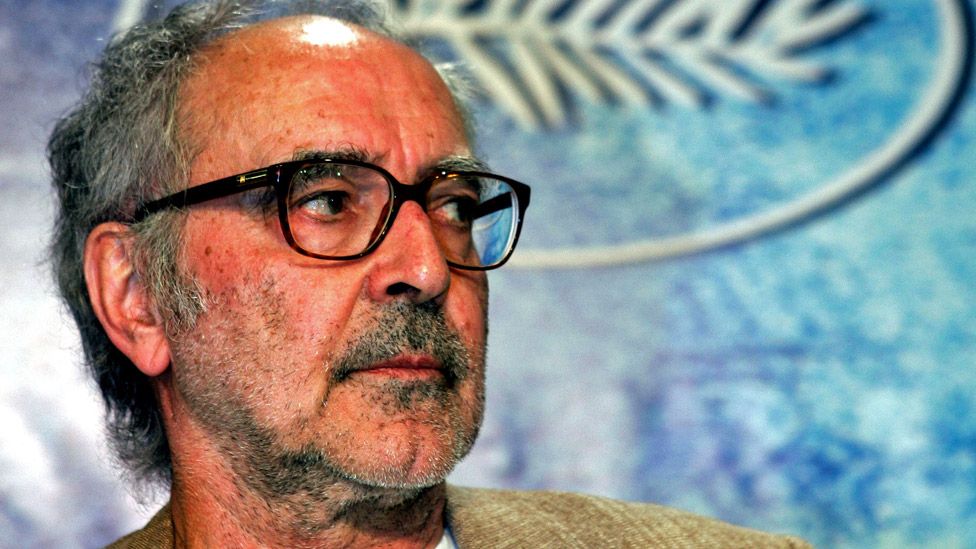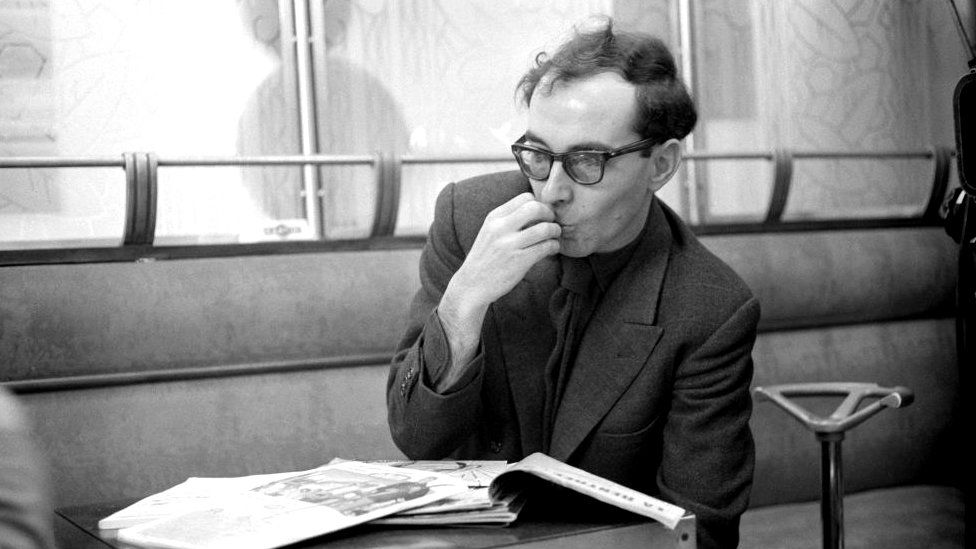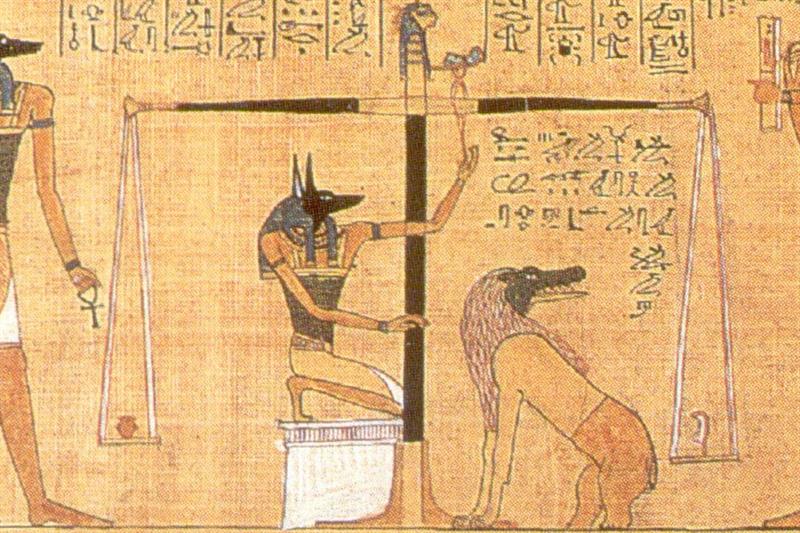REST IN POWER
Jean-Luc Godard: French-Swiss film director dies at age 91
France has lost "a national treasure," said French President Emmanuel Macron. Godard was one of the most influential film directors and was often credited with revolutionizing cinema.
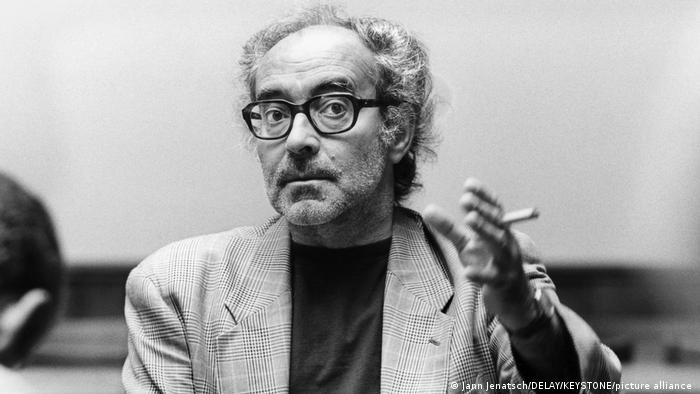
Godard was born in Paris on December 3, 1930
Franco-Swiss filmmaker Jean-Luc Godard has died at the age of 91, the French newspaper Liberation reported on Tuesday.
Godard was one of the leading figures of the movement. Critics rated him among the top 10 directors of all time, and he has had a direct influence on the likes of Quentin Tarantino, Bernardo Bertolucci, Steven Soderbergh and Martin Scorsese.
French President Emmanuel Macron said France lost "a national treasure" with Godard's death.
Interest in anthropology influenced filmmaking style
In the late 1950s and early 1960s, a small group of French filmmakers turned the cinema world on its head. They called themselves the Nouvelle Vague — or New Wave — and they broke all the established rules of filmmaking.
Born in Paris on December 3, 1930, Godard moved to Switzerland with his family at age 4. For much of his youth he lived on the Swiss side of Lake Geneva, where his father, a physician, ran a clinic. He returned to Paris after the war, to complete his baccalaureate.
He studied at the University of Paris and planned to pursue a career in anthropology. Although he never completed his degree, his interest in ethnology informed his filmmaking style, as he would use documentary film techniques to create what became called "cinema verite."
His interest in films blossomed in 1950, when he joined the Ciné-Club du Quartier Latin. There he met Claude Chabrol and Francois Truffaut, who would also become influential members of the Nouvelle Vague. Initially though, his interest in films was purely as a critic. He wrote for the publication Cahiers du Cinema.
It wasn't until 1954 that he was inspired to make his first short film, while working as a laborer on the Grand Dixence dam in Switzerland. With a borrowed camera, he shot Operation Beton (1954; Operation Concrete). The construction company bought the film and used it for publicity purposes.
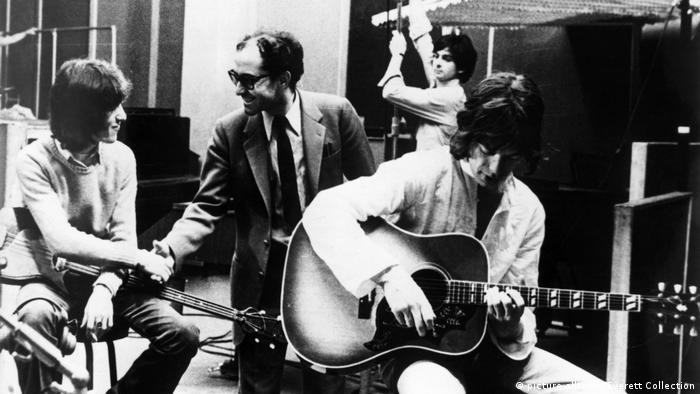
JEAN-LUC GODARD: SELECTED FILMS
'Sympathy for The Devil' (1968)
Innovative filmmaker and radical intellectual: Jean-Luc Godard, born in Paris on December 3, 1930, has never been interested in conventions; he's regularly ignored film awards and honors. The director likes to go beyond the boundaries of standard film productions, even doing without screenplays. In 1968, he ventured into a new genre and made an experimental documentary about the Rolling Stones.
1234567891011
Breaking all the rules
A keen admirer of German playwright Bertolt Brecht, Godard wanted to translate Brecht's concept of "epic theater" into the language of film. Over the next few years, Godard, Truffaut and others worked to produce a series of short films. They developed a new take on filmmaking, using lightweight equipment, natural lighting, long takes, sometimes with improvised dialogue. The established rules of filmmaking and narrative continuity fell to the cutting room floor.
Then in 1960, Godard made his first feature film, A Bout de Souffle (Breathless). The film, produced by Francois Truffaut and starring Jean Seberg and Jean-Paul Belmondo, was the turning point in his career.
A Bout de Souffle heavily referenced American film noir of the 1940s and 50s, but also combined the Nouvelle Vague's groundbreaking new techniques. The story of a car-thief who shoots a policeman and is then turned over by his girlfriend used hand-held camera work, incidental lighting, actor monologues to camera and jump-cuts.
It was the start of his most successful and influential period of filmmaking.
A new tsunami of creativity
Between 1960 to 1967 was a period of intense activity for Godard, in which he made the dozen films which form his Nouvelle Vague canon.
The most successful was the 1963 feature Le Mepris (Contempt), starring Brigitte Bardot. It was the most expensive film he made, and his only orthodox film, though it took Nouvelle Vague techniques and solidified them as the accepted way of modern cinema.
After Pierrot le Fou (1965), his second film starring Belmondo, he was asked to direct Bonnie and Clyde, but he knocked back the offer, saying he distrusted Hollywood.
Godard's political views had already appeared in films such as Le petit soldat, about the Algerian War of Independence. But in his final film in the Nouvelle Vague genre, Week-End, he delivered a scathing attack against consumerism and bourgeois society. Then in the closing credits, instead of simply "Fin," he screen lit up with "Le Fin du Cinema," or "The End of Cinema."
Political upheaval and militancy
Inspired by the May 1968 protest movement that shook Paris and other European cities, Godard became increasingly politically outspoken. With his longtime friend Francois Truffaut, he led protests that shut down the 1968 Cannes Film Festival, to show solidarity with the students and workers.
Godard's revolutionary and Marxist rhetoric pervaded both his films and his public statements. He openly criticized the Vietnam War. Between 1968 and 1973, he and Jean-Pierre Gorin made a series of films with a strong Maoist message. The best-known of them is Tout Va Bien (Just Great, 1972), starring Yves Montand and Jane Fonda. But towards the end of 1970s, Godard lost faith in his Maoist ideals.
Accusations of antisemitism
Although Godard's movie-making slowed down in the 1980s, later in life he continued to attract controversy. The Catholic Church accused him of heresy after Je Vous Salue, Marie (1985). Critics described his interpretation of Shakespeare's King Lear (1987) as "tired and labored," and "sad and embarrassing." Godard was accused of trashing his own legend.
Accusations of antisemitism dogged Godard since he traveled to the Middle East in 1970 to make a pro-Palestinian film, which he never completed; and remarks about Moses which he made on French television in 1981.
But in his book Everything is Cinema: The Working Life of Jean-Luc Godard, author Richard Brody argues that Godard's work treats the Holocaust with "great moral seriousness," and says that the Moses comments have been taken out of context.
His 2018 film, an avant-garde essay film called The Image Book (2018), was nominated for the Palme d'Or at the 2018 Cannes Film Festival. The influential director remained active into his 90s.
Assisted suicide: Death of cinema giant Jean-Luc Godard revives debate in France
French President Emmanuel Macron on Tuesday announced a national debate on end-of-life options that will include exploring the possibility of legalizing assisted suicide. Macron's announcement came the day the family of French director Jean-Luc Godard said he died by assisted suicide at his home in the Swiss town of Rolle
Jean-Luc Godard: Nine things about the man who remade cinema
By Thom Poole
BBC News
 GETTY IMAGES
GETTY IMAGESJean-Luc Godard, who has died aged 91, was one of the most influential directors in the history of cinema.
The French-Swiss filmmaker found fame in the late 1950s as one of the leading figures in the French movement known as the New Wave, going on to direct dozens of films in a career lasting more than half a century. Here are nine things to know.
1. He changed film with a girl and a gun
All you need to make a film, Godard once wrote, is a "girl and gun". He proved it with his 1960 debut Breathless (À Bout de Souffle).
The girl, Patricia, is involved with a petty criminal, Michel, who is on the run for shooting a policeman. She betrays him and police shoot him dead in the street.
Breathless resembled a crime drama, but as with many of his works the plot was just a frame for Godard to explore culture, experiment with image, and examine cinema itself.
It had an instant impact, winning acclaim and a huge profit on its meagre budget.
Nearly 60 years on, it is widely acknowledged as a classic and its energy still startles.
2. He cut up convention
One of the most radical elements of Breathless was the prominent use of the editing technique known as the jump cut.
Filmmaking both before and after Godard's debut largely favours smooth editing to give the illusion of continuous time.
By contrast, in Breathless, Godard would cut within the shot, making time appear to jump forward.
 BREATHLESS
BREATHLESSIt is jarring, as Godard surely intended it to be. At the very least it grabs the viewer's attention, but it has also been interpreted as reflecting Michel's boredom or as an attempt by Godard to force his audience to reflect on the nature of the cinema.
Throughout his career Godard would play with the grammar of filmmaking.
3. He rewrote the script
There were other innovations. Breathless was filmed on location, using handheld cameras, with Godard writing the script on the day, feeding lines to his actors as they filmed.
This was another break with tradition, with expensive studio-led films depending on tight scripts, large crews and storyboarding.
 GETTY IMAGES
GETTY IMAGESThe technique used by Godard gives Breathless great spontaneity and a documentary-like feel.
He would use it in many of his films, infuriating his stars who would turn up on set not yet knowing what their lines would be.
Godard and his New Wave contemporaries saw truly great films as being stamped with the vision of the director - and what better way to control a film if you are in effect making it up as you go along.
4. He was a huge cinephile
Godard might have been an iconoclast, but it came from a place of deep knowledge and affection for cinema.
Before becoming a director, he was an avid cinemagoer, sometimes watching the same film several times in one day at the clubs he and other New Wave figures attended
Like other figures from the era, he was first a critic, developing his ideas of what he thought cinema should be that he was able to carry out in practice.
His films are littered with references to other works and even as he sought to push the medium forward he could not help but look back.
5. He kept innovating
Breathless alone would have secured his place in film history, but his has been a prolific career. The IMDB lists more than 100 works, including shorts, documentaries, TV series and more than 40 feature-length films.
The 1960s saw his most celebrated and widely watched works, from what he called a "neorealist musical", 1961's A Woman Is a Woman (Une femme est une femme) to the 1965 dystopian science-fiction Alphaville to 1967's black comedy, Weekend, featuring Emily Bronte being set on fire.
 GETTY IMAGES
GETTY IMAGESAfter Weekend he embraced political radicalism, making a series of Marxist-themed films that culminated in 1972's All's Well (Tout Va Bien).
In the decades that followed he retold the virgin birth, prompting a complaint from then-Pope John Paul II (Hail Mary), tried and failed to recruit Richard Nixon as an actor (King Lear) and released an epic personal history of film (Histoire(s) du cinéma). In 2014, while in his 80s, he released an experimental 3D film starring his dog Roxy (Goodbye to Language).
6. He made the audience work
There is no getting away from it - Godard's films range from the challenging to the near incomprehensible.
He has enjoyed commercial success but later works saw limited releases despite critical adoration.
Godard was a voracious reader on top of his love of cinema and the sheer weight of references can be bewildering, Barely 70 minutes long, Goodbye to Language, for example, packs in nods to abstract painter Nicolas de Staël, modernist US author William Faulkner and mathematician Laurent Schwartz.
Also at play is one of Godard's most important influences, German dramatist Bertolt Brecht.
Brecht wanted his audience to remain critically engaged in his work, and so deployed a number of methods to unsettle them and remind them they are watching something artificial.
Several of Godard's films use Brechtian devices, such as 1967's La Chinoise (The Chinese), which includes lurid captions and actors breaking the fourth wall, with Godard even leaving the clapper board in at the start of scenes.
7. He put himself in his art
In many of his works the lead can be seen as a proxy for Godard himself.
In 1963's Le Mépris (Contempt), Michel Piccoli plays a French playwright tasked with reworking a film adaptation of Ulysses.
The film explores the tensions between commercialism and creativity and portrays a disintegrating marriage, modelled on Godard's relationship with Anna Karina, the star of several of his films.
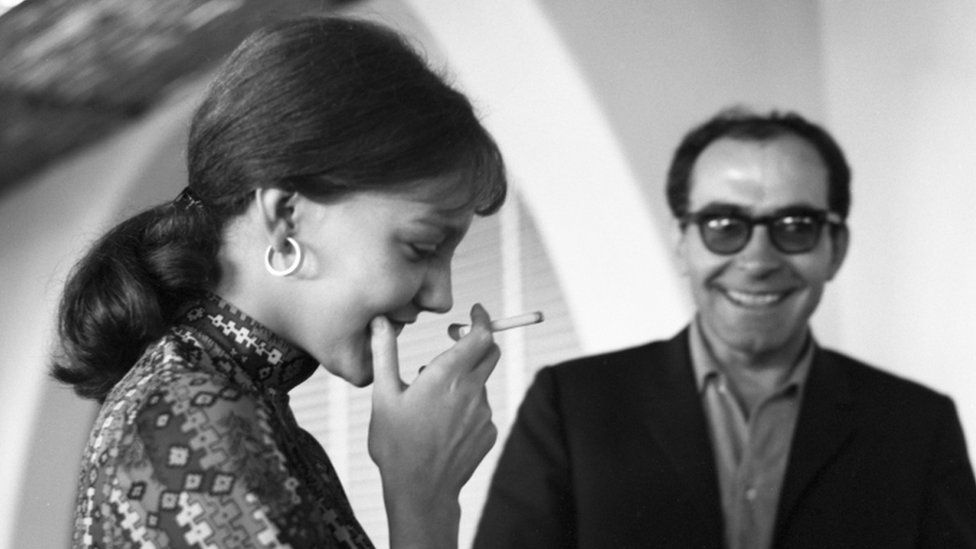 GETTY IMAGES
GETTY IMAGESCharacters in his film are often are a mouthpiece for himself but in later years he made himself a feature of his films.
In 1995 he made the autobiographical JLG/JLG - Self-Portrait in December and his essay films feature his own voice, most recently in 2018's The Image Book.
US critic Roger Ebert's assessment of Godard in 1969 described him as "deeply into his own universe", a good explanation of why Godard's films can be both so distinctive and so frustrating.
8. He could be a 'shit'
Not unjustifiably Godard has the reputation of being difficult both personally and professionally.
His two marriages, first to Anna Karina and then to Anne Wiazemsky, were stormy, something that spilt out into his films.
Angered by producer Iain Quarrier's recut of his 1968 Rolling Stones documentary Sympathy for the Devil, Godard punched him in the face when it was shown in London.
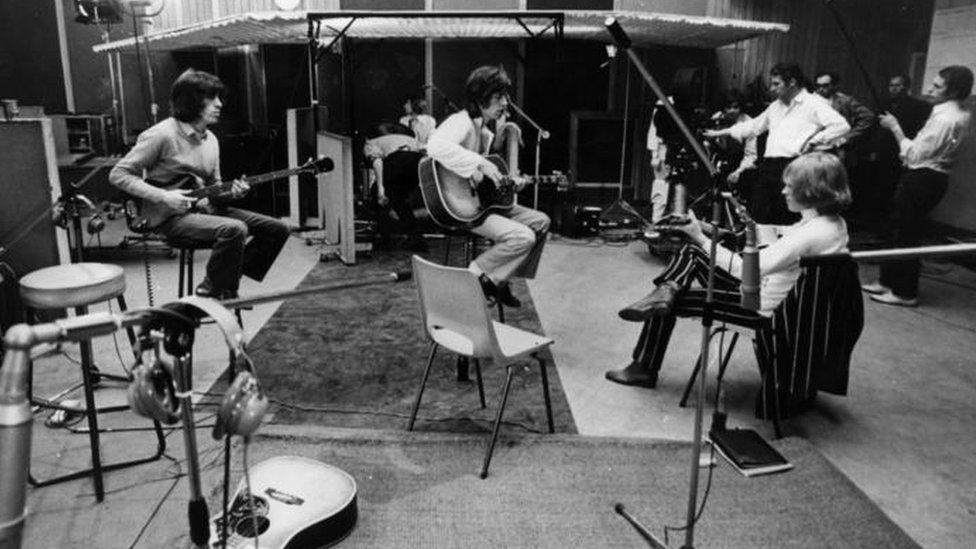 GETTY IMAGES
GETTY IMAGESThere was an extraordinary row with his friend, another great New Wave director, François Truffaut.
In 1973, Godard wrote to Truffaut attacking his latest film, Day For Night, and asking for funds to make a response. Truffaut wrote a furious reply, accusing Godard of behaving "like a shit" and listing years of misconduct by Godard. Unsurprisingly, Truffaut refused to pay for Godard's film. The pair's relationship never recovered.
But collaboration was an important part of his career too.
His early films would not be the same without Karina or Wiazemsky, nor Godard surrogate Jean-Paul Belmondo.
He forged a close partnership with leftist thinker Jean-Pierre Gorin and cinematographer Raoul Coutard, who said: "He can be a shit... but he's a genius."
Since the 1970s his most important collaborator has been his life partner, the Swiss filmmaker Anne-Marie Miéville.
9. But he was also an inspiration
Film industries around the world saw their own New Waves. America's New Wave gave us works like Bonnie & Clyde, Chinatown and Jaws.
The work of Godard himself - whether personal, experimental, political or all three - has had a massive impact.
US director Quentin Tarantino named his production company A Band Apart, a reference to Godard's 1963 film Bande à part (Band of Outsiders). Italian director Bernardo Bertolucci included a homage to it in his film The Dreamers.
Godard's influence can be seen in the blurring of documentary and fiction by Iranian director Abbas Kiarostami or in the thematically and formally provocative work of Denmark's Lars Von Trier.
Four Godard films made Sight and Sound's list of 50 greatest films ever - Breathless, Le Mépris, Pierrot le Fou and Histoire(s) du cinéma.
